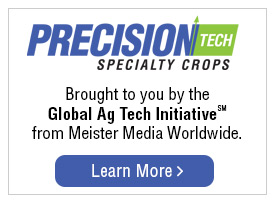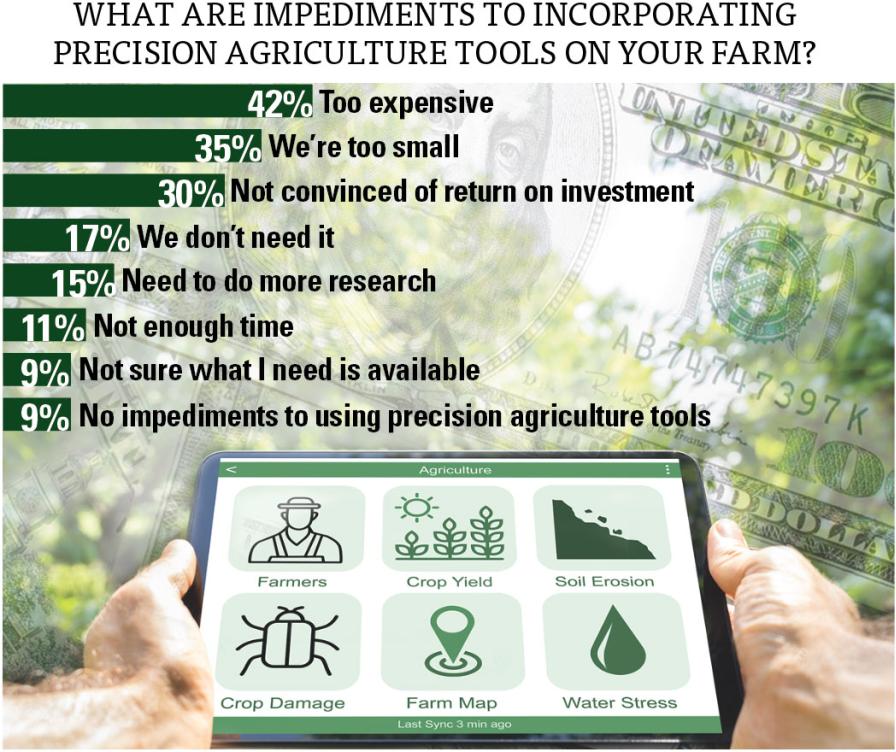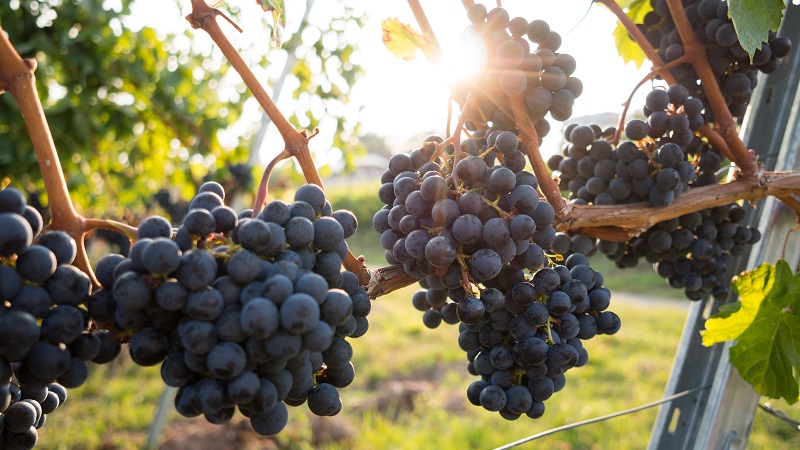Large Produce Growers Tout the Benefits of Digital Ag Tech

Results from American Fruit Grower’s annual State of the Industry survey on the use of precision, or digital agriculture, reveal a real dichotomy, as smaller growers most frequently say they lack the economy of scale necessary to adopt the technology. But larger growers — and even some of the smaller ones — basically say the opposite. They say they have to implement digital agriculture to bring down costs.
The survey includes the following question, among a few others, on the topic: “What are impediments to implementing precision agriculture tools on your farm?”
Among smaller growers, numerous responses were along the lines of this typical quote:
“Small farm and can’t afford high-end tools.”
Besides cost, which smaller growers cite repeatedly, another problem they encounter is they don’t have the staff prepared for digital agriculture.
“Unfortunately, we did not have anyone willing to use technology on our farm,” one grower says.
In another comment, growers commonly cite that “price is also prohibitive for our small operation. We don’t make enough selling to the packing house to be able to purchase technology.”
SAVING TIME = MONEY
But larger growers repeatedly say they needed to implement the technology to save water, labor, and time, which all serve to drive down costs. Many of these growers offer simple terse answers to the follow-up question, “What was the driver to implement any or all of these technologies?”
There is a wide range of responses, from “time savings” to “increase production.” Though many do specifically cite their bottom lines. “Increase yields and reduce costs,” was typical, as was this two-word response: “save money.”
However, one grower gives a specific example of how he saves time, which of course amounts to saving money.
“Lay out an orchard with a transit; lay out one with GPS,” he says. “One takes days, especially on rolling hills, another takes one person and can be done in hours, even in near darkness. I’ve done both. Guess which method I use now?”
Part of the dichotomy that generally exists between smaller growers and their larger counterparts is in how they define the term “precision agriculture.” (Though, as mentioned, it isn’t strictly about size, as many smaller growers have successfully implemented the technology, and some larger growers have not.)
For example, most growers have smart phones today, so they can take advantage of apps that are available at little or no cost. A good example is this grower, who notes: “I use the free components of FarmLogs. The key word being ‘free.’”

SKEPTICISM REMAINS
In addition, there are growers who remain suspicious of the new technology, such as this grower, who cites a complaint that used to be much more prevalent, but definitely still exists.
“Who told the machine what to do? Is the decision process written into this code better than me? And if they want me to debug the system and teach the machine everything I know so some tech [salesperson] can resell my know-how without paying for it. No thanks,” he concludes.
A significant percentage of growers — approximately one in five — say they are open to the technology, but for various reasons, have not done so.
“We would implement more,” one says. “However, some technologies are not yet ready for ‘prime time.’ We are, however, testing some new technologies on our farm.”
But it always comes down to money, and even those who are comfortable with the technology say cost remains the biggest obstacle to further implementing digital agriculture.
“We will continue to use precision ag tools as we can afford them,” one concludes. “Rome was not built in one day.”









